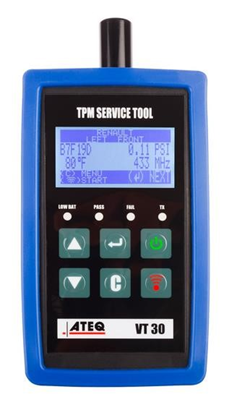Nissan GT-R Diagnostics Tools
Brandyn Mowat
Michael Howard
EcuTek have developed several special tools for various modules on the GTR. Special Tools are available for the ECM, TCM, ABS and TPMS modules. The special tools can perform an unprecedented level of features that have never been available to the aftermarket and tuning industry. Some of these features include:
- Clutch Pressure Adjustments
- Clutch Touch Points Adjustments
- Temperate and Warning History read/clear
- Gearbox Learning
- Steering wheel sensor calibration
- Idle Learning
- Power Balance
- Brake Sensor calibration
- Tyre Pressure Sensor registration
ECM Tool
Reset ECU
This function will clear all learnt values for idle control as well as fuel trims.
Idle Learning
This will begin a factory auto learn airflow/throttle balancing sequence. Ensure that the engine and TCM are over 65 deg C, the vehicle is in park with the handbrake on and that no DTCs are current before starting.
This function only works with vehicles equipped with a MAF sensor.
Power Balance
Enables the user to individually disable injectors in order to isolate potential issues.
ABS Tool
Steering Wheel Angle Calibration
This should be used to calibrate the steering wheel alignment for the driver display and other modules, set the steering wheel in the straight ahead position then start the calibration process.
Decel G Sensor Calibration
– Ensure the vehicle is on level ground, in PARK, Handbrake ON with steering wheel straight ahead position.
Brake Pressure Sensor Calibration/Pressure Valve Calibration
Ensure the vehicle is on level ground, in PARK, Handbrake ON with steering wheel straight ahead position before commencing this test, you will hear noise and experience movement so be prepared!
Tyre Pressure Monitor System
Start the registration sequence then visit the indicated wheel and press the button on the handheld TPMS tool for registration.
There are various TPMS tool on the market but we have recently tested the ATEQ universal TPMS tool shown below, the model is VT30 and the cost is around 170usd from companies like Amazon. This will work on the 2014- model GTRs.

TCM Tool
Clutch Gear Learning
This process will initiate the TCM ECU to self calibrate the clutch pressure, clutch touch points along with pump and solenoid duty learning. Once the sequence starts it should be allowed to complete fully and takes around 5 minutes in total. The vehicle should be up to temperature with coolant temp over 80 deg C and Gearbox oil temp over 65 deg C. The vehicle should be on a level smooth surface while steering wheel is straight. You should be in the driver seat of the vehicle whilst the learning sequence is active. It is normal for the engine rpm to rise and fall during the test. The vehicle will also shunt back and forth during the test as the gears and clutches are engaged and disengaged. Once the learning sequence is complete the learned values can be checked under Read Learned Data.
Clutch Touch Points
These touch points are the actual engagement point of the clutch plates to connect the engine crankshaft drive to the input shaft of the gearbox. It's the bite point which normally is experienced when raising the clutch pedal on a vehicle fitted with a conventional manual gearbox. There are two gearbox shafts, Bank A (even gears 2-4-6) and Bank B (odd gears 1-3-5). With the gearbox in Drive (manual or Auto) press the accel pedal so that the engine rpm rises, the clutch will engage and the vehicle will start to creep forward.On a poorly calibrated touch point where the value would be below 8 (example 5) the engine rpm will rise too high (around 1200-1400rpm) and the vehicle will not really move forward, and then suddenly the clutch will engage causing an unpleasant jolt forward. If the Touch point is too high the clutch will be engaged at idle and if the foot brake is on to prevent the vehicle from moving then the clutch will be slipping creating heat and excessive wear, when the foot brake is released (off) the vehicle will creep forward, as the accel pedal is pressed the clutch is already partially engaged and any accel movement will directly increase the vehicle speed further. The setting required for each bank should be trial and error as each vehicles tolerance and amount of wear may be different. The touch points should be increased until the vehicle just starts to creep and then reduced by a value of 1 so that the vehicle can almost move forward on a smooth surface.
Clutch Pressure
The Clutch pressures are applied for each clutch: Clutch A (even gears 2-4-6) and clutch B (odd gears 1-3-5). Raising the clutch pressure values will give a more positive pull away and gear change, reducing these values will encourage clutch slip along with a smoother pull away with smooth undetectable gear changes. On high power vehicles these pressures should be increased to minimise torque slip on gear changes.
Read Clutch Temps – This will display the maximum clutch temps that have been achieved
Read Oil Temp History – This will show the Oil Temp history including frequency of oil temp .
Read Warning History – This will display any protection thresholds that have been triggered.
Clear Warning History – This will clear the TCM warning history.
Reset Clutch Adjustment – These will clear and reset all current Clutch Capacity or Touchpoints.
(+44) 1895 811200 When dialing from within the UK, the country code is not required so dial 01895 811200 Open Hours Monday to Friday 9:00am - 5:00pm BST (UK Time) (4am-1230pm Eastern Standard TIme US) Visitors by appointment only EcuTek Tehnologies Ltd.Contact Us:
8 Union Buildings
Wallingford Road
Uxbridge, UB8 2FR
England
VAT No: GB 235 2616 23
